- JAPANESE
- LANGUAGE
X
 THAT IS GOOD
THAT IS GOOD
After participating in the annual festival “Takibi No Oto” held at the Wakasu Park campground in Tokyo at the beginning of November and enjoying the autumnal atmosphere, I moved to Hokkaido and have now started the snow season and enjoying the snow. Strong cold air has also entered the area and it has been raining quite a bit on the Sea of Japan side of northern Japan. The forecast is for a lot of snow this winter, so it will be a good season for all snow freaks.
Now, a little time has passed since my previous article on the Oki Islands before the islands, and this time I would like to continue with the second part of the story, the Dogo (Oki Islands).
The Oki Islands of Shimane Prefecture are located approximately 60 km north of the Shimane/Tottori border and consist of approximately 180 islands and four inhabited islands. Three of these inhabited islands, Nishinoshima Town (Nishinoshima), Ama Town (Nakanoshima), and Chino Village (Chiburi jima), are called “Douzen. The largest island, Oki Island (Oki no Shima-cho), is called “Dogo”.
The island’s natural environment and human activities are considered globally valuable due to its origins, and in 2013 it was recognized as a “World Geopark,” an “island where the memory of the Earth lives on”.
Previously, I visited the 3 islands of Dozen and arrived at Oki Island by ferry from Nakanoshima.
Dogo, where Oki Island Town is located, is situated approximately 80 km northeast of the Shimane Peninsula and is the largest island in the Oki Islands. Takeshima, which is often heard about in territorial disputes, is located approximately 158 km northwest of Oki Island Town and actually belongs to Oki Island Town. The island has a circumference of 151 km, an area of 242.82 km2, and a population of about 13,000. The population of the entire island, including the islands of Dozen, is 19,000, so it is no exaggeration to say that most people live on this island.The island is a nearly circular volcanic island, and the entire surrounding coastline is designated as Daisen-Oki National Park, offering magnificent ocean scenery and steep mountain ranges.
I got a rental car and went island-hopping as usual. This last island was by far the largest compared to the other three islands, and one day was not enough time to see everything, so I decided to spend two nights and three days to go around the island…. However, there were not that many hotels to begin with, and most of the reservation sites were fully booked, with only the most expensive places available. I thought I could just look for a place to stay when I arrived, but there were many places that would not accept me on the day of arrival, so I had a hard time getting a place to stay…. Advance reservations are recommended.
Renting a car is by far the most convenient way to get around the island. The island is very large, but buses are sparse. Also, taxies seem to be available, but I don’t think I saw many of them. Even if you rent a car, be aware that many sections of the island are closed due to landslides caused by heavy rains over the past few years.When I visited the island, there were many stores and inns that were not open due to the Covit-19 Disaster, and many construction workers had come to the island for the repair work, and most of the inns were occupied. I see.
Even if an island does not have any major tourist attractions, even a casual view of the island is unique to the island and gives you a sense of its history and culture. I personally would like visitors to experience such places in person, but there are some notable spots that should not be missed! It is true that there are some major tourist attractions that are worth mentioning. I would like to introduce a few of my personal favorites.
●Yana-no-Matsubara・Funagoya Traditional Boathouses
Yana-no-matsubara has been selected as one of the 100 best pine forests in Japan for its white sand and green pines. The wooden boathouses still in use today are lined up in rows.Beyond them, one can see Mt. Takada, a place of mountain worship.
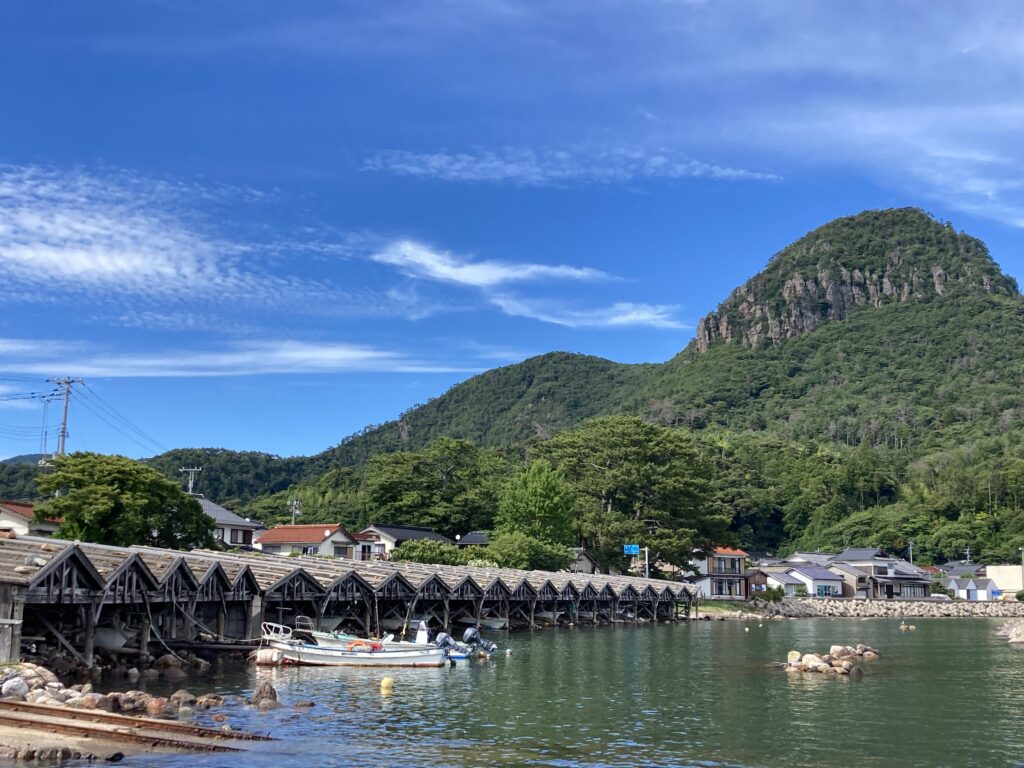
●Dangyō-no-taki Waterfalls
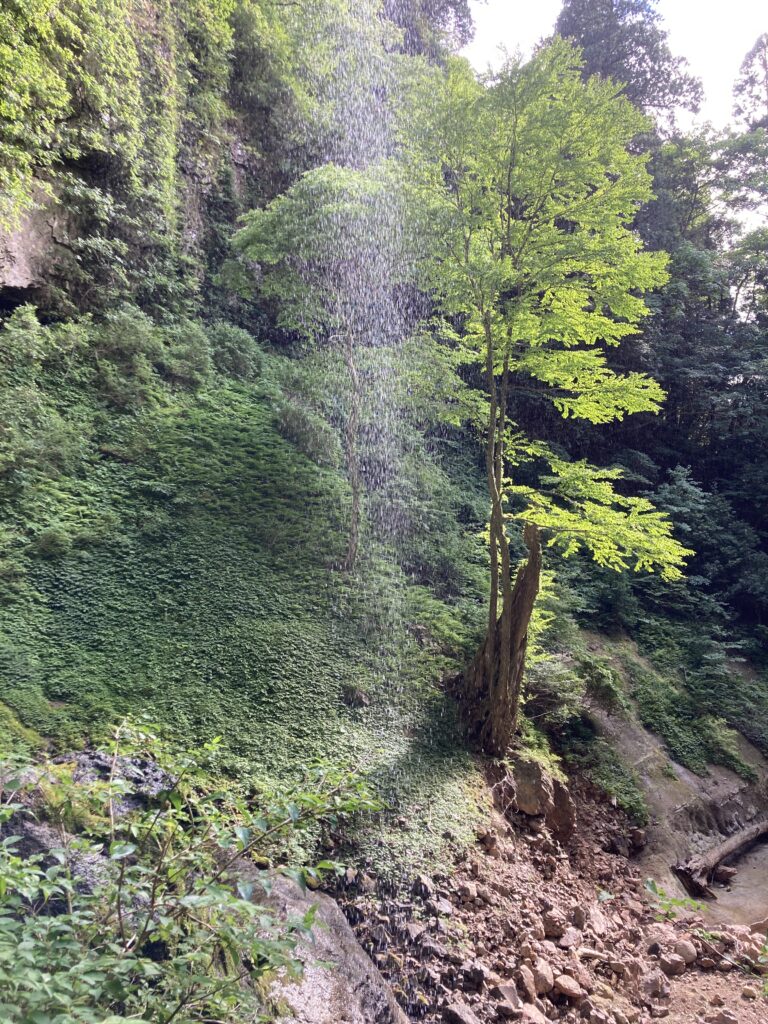
At the upper reaches of the Nakugawa River in the mountains, pass through the torii gate and walk along the mountain path leading to the Dangyo Shrine, where you will find the Dangyo Shrine on a rock face like a series of folding screens, with a 50-meter-high male waterfall and a 40-meter-high female waterfall cascading down on either side.
It was selected as one of the 100 most famous waterfalls in Japan and one of the 100 most famous waterfalls in Japan. The shrine building and the graceful waterfall, which stand quietly deep in the mountains, are quite mysterious.It is also a waterfall that can be viewed from behind the waterfall by going around to the back side.
●The three largest cedars in Oki
On the island of Oki, there are three sacred giant trees, known as the “Three Great Cedars. All of them are huge trees with powerful life force and mystery.
Please visit them.
①Yaosugi (eight hundred cedar trees)
A giant cedar tree more than 1,000 years old is located in the precincts of Tamawakasunomikoto Shrine, one of the three major shrines in Oki.
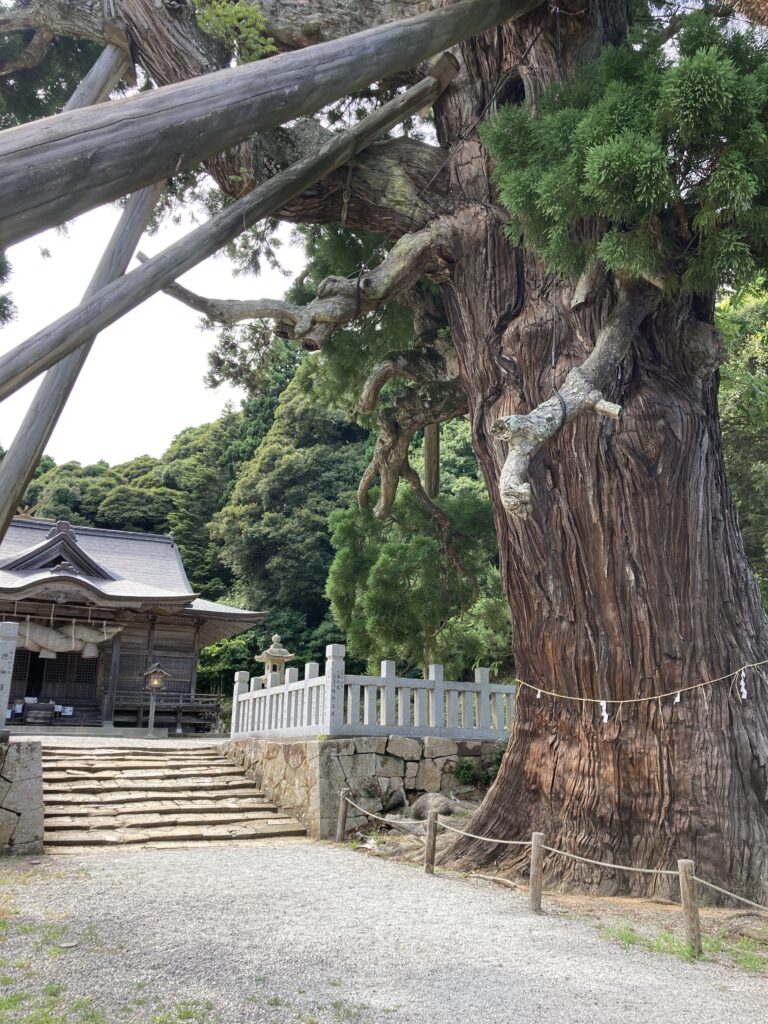
②Nakamura no Kabura-cedi
Nakamura no Kabura-cedi is a giant tree, estimated to be 38.5 meters tall and 600 years old, with a distinctive feature that it is divided into six trunks from near the base.There used to be 12 trunks.
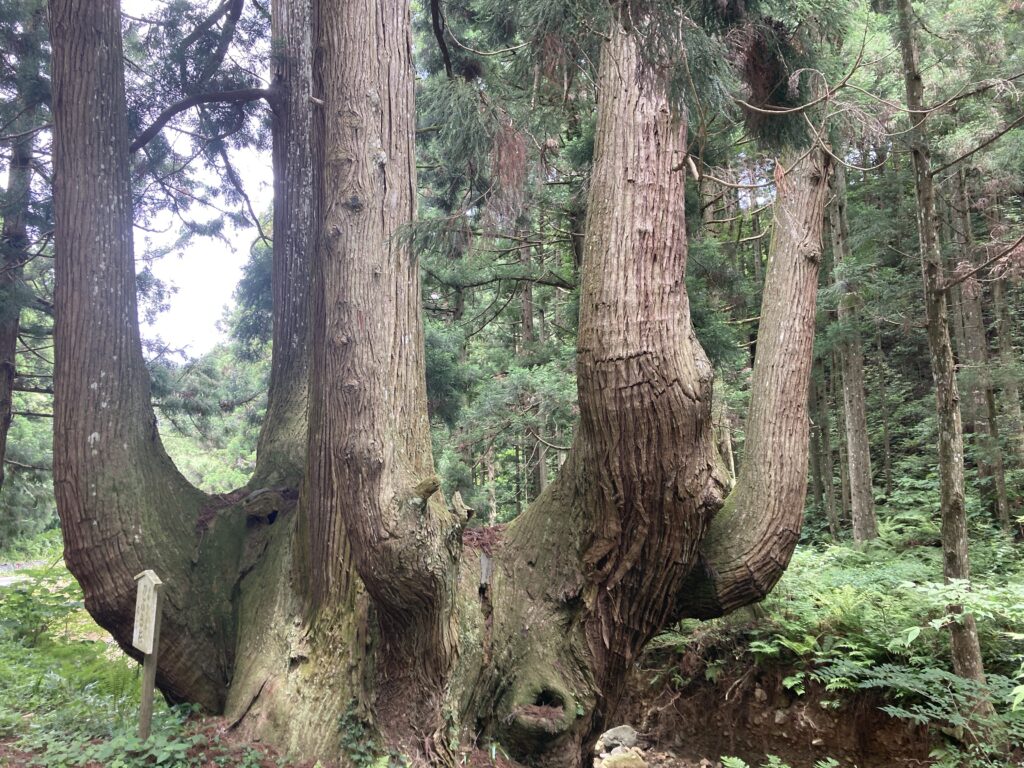
③Chichisugi cedar in Iwakura
Chichigusugi, a cedar with a fantastic atmosphere, is revered as a sacred tree by the local people.This 800-year-old, 40-meter-high giant tree towering over the deep forest is the most spectacular of the three major cedars.
This is the only one I could find after climbing up the mountain road for a long time, but I am glad I went.
It was a spectacular sight, and the cool air and the atmosphere of the forest gave it a very divine feeling.

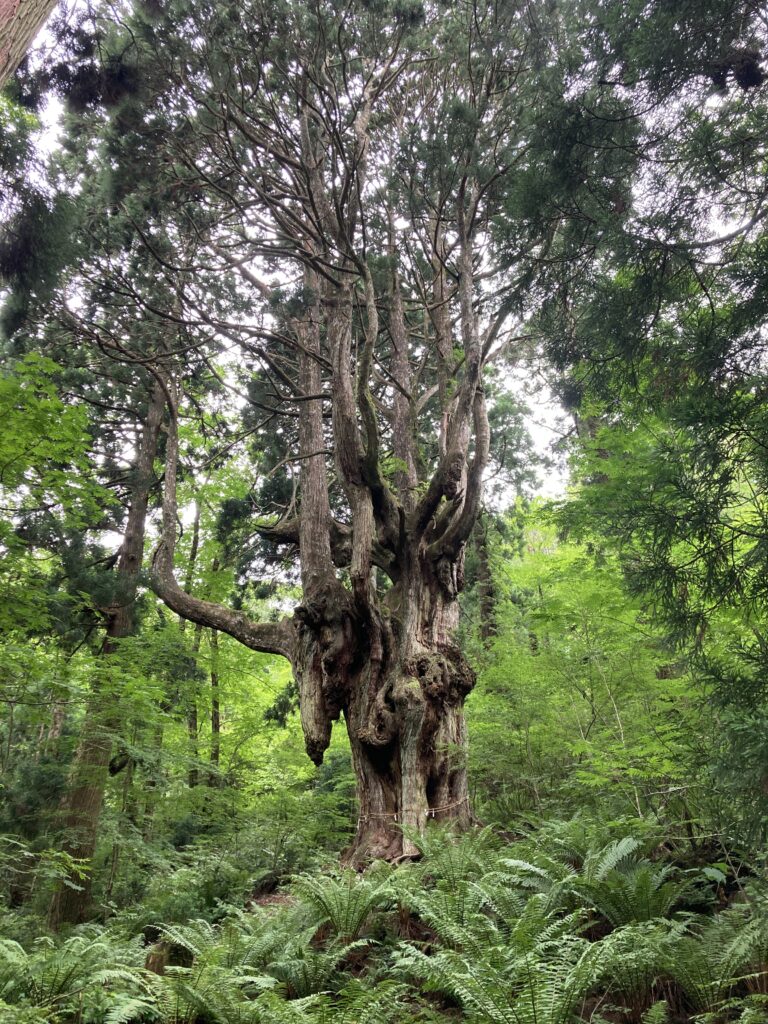
●Fukuura Tunnel
Tunnel dug by hand from the Meiji Era to the Showa Era.
It is deeply moving to think that people in the past passed through here to come and go between villages.
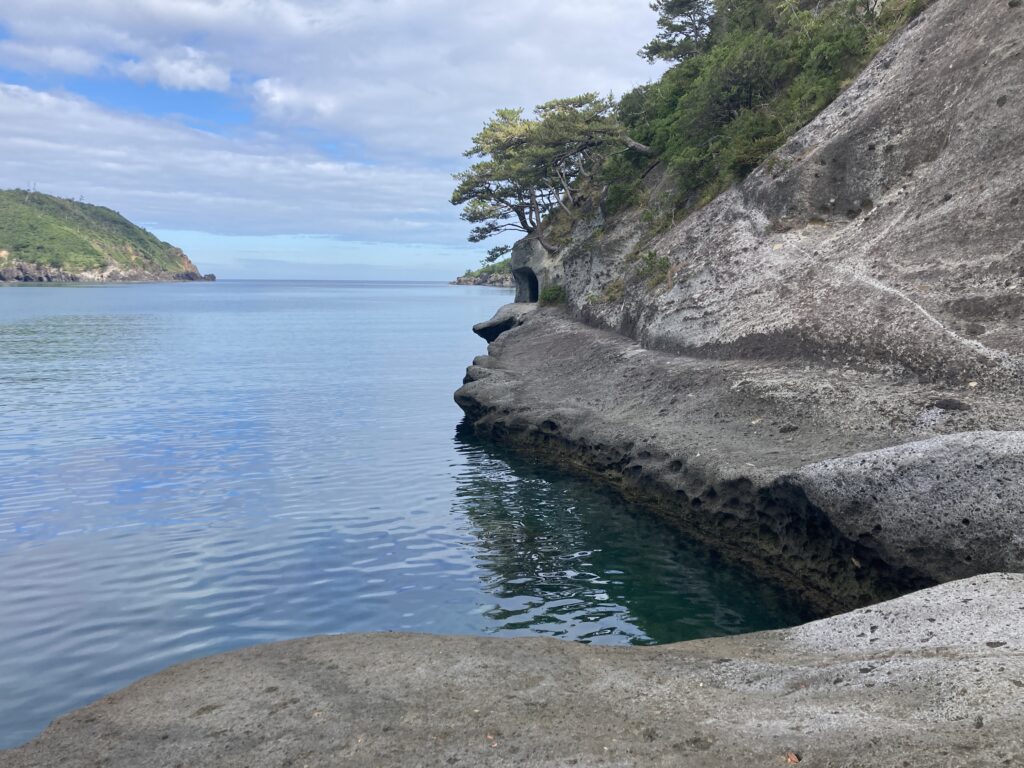
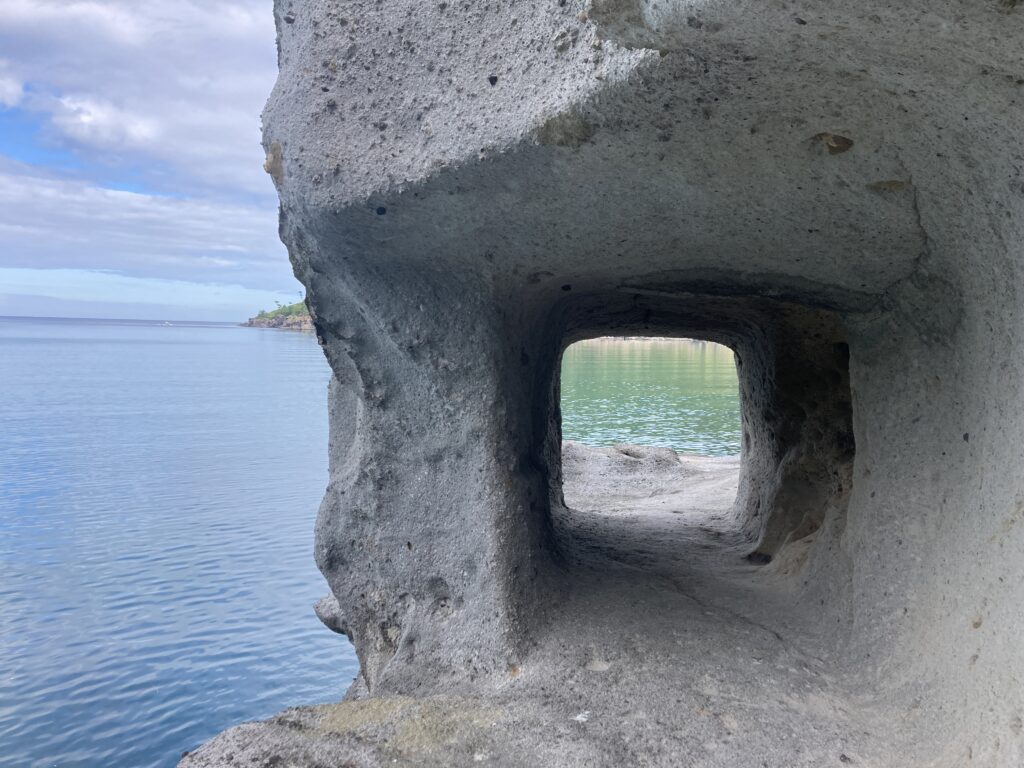
●Shiratorizaki Observatory
Personally, I think this is the best place on the Oki Islands for sea views.
The path was also beautiful with hydrangea at the right time.
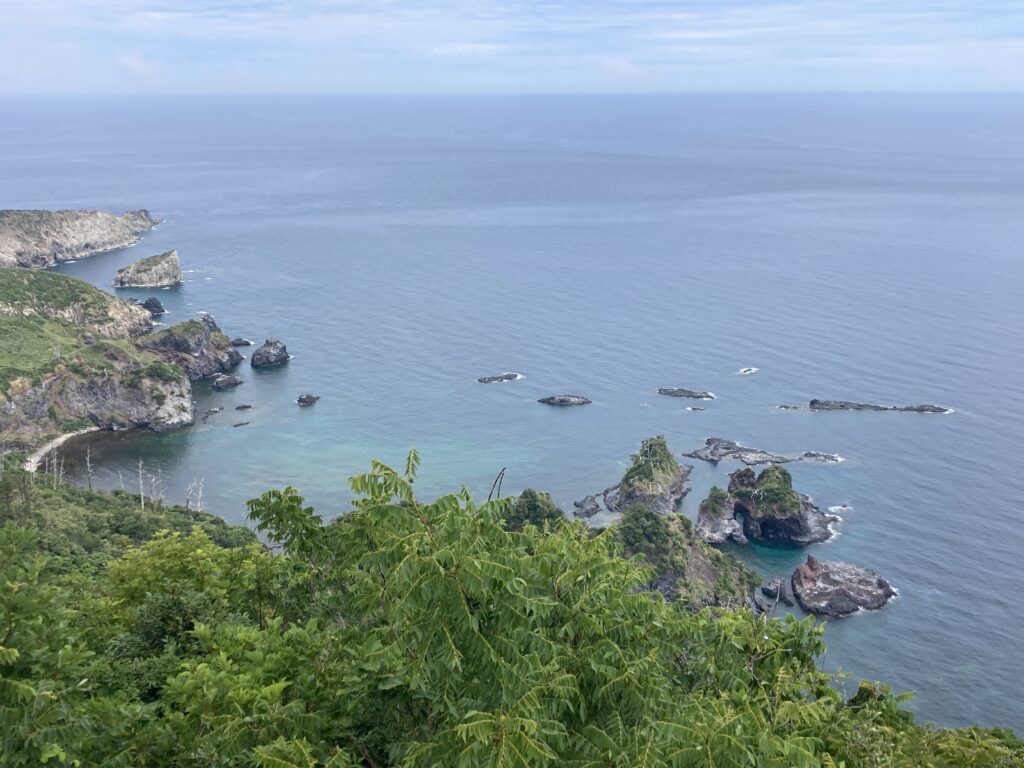

●Jodogaura Coast
Jodogaura, with its promenade offering views of the ocean and islets, is a marine park area protected as a core area of a national park, and is a good spot for snorkeling. There is also a campground with showers and toilets near the beach, so it is self-sustaining.
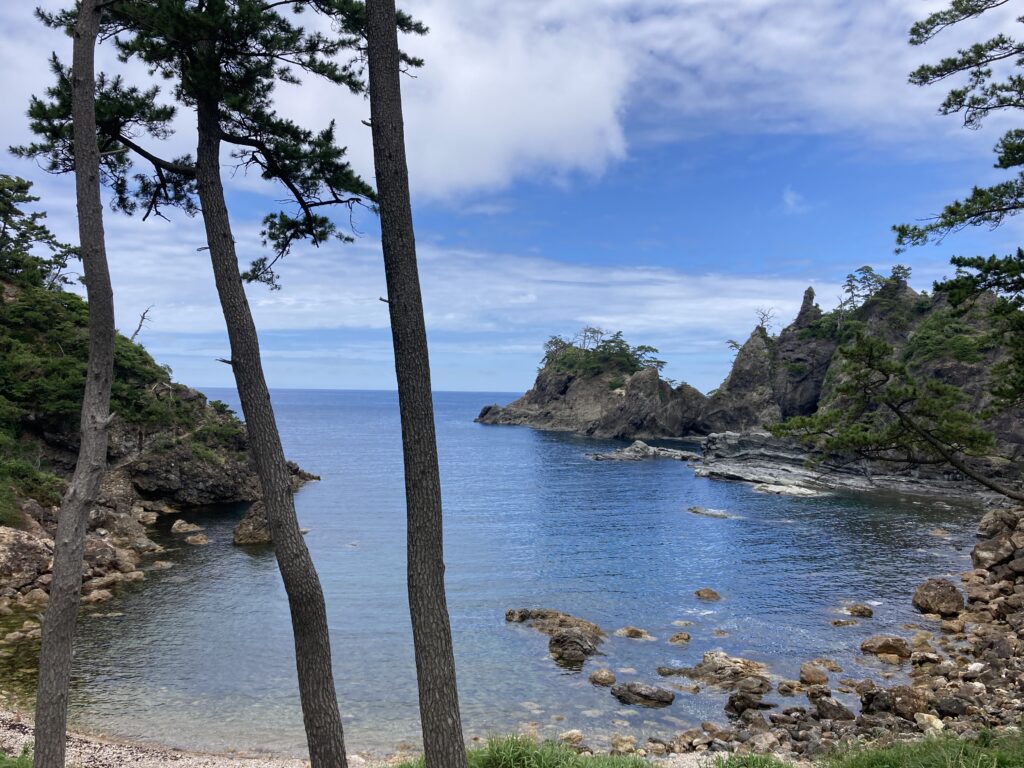
I’ve given you a brief introduction, but besides these, the island is basically surrounded by the sea 360 degrees. The sea is beautiful no matter where you go along the coastline, and the mountain side scenery is also wonderful because it is mountainous despite being an island. The island is also deep in the mountains, so the scenery on the mountain side is also wonderful. You will also be enchanted by the scenery created by people’s activities, such as the villages and rural landscapes that spread out in the valleys.
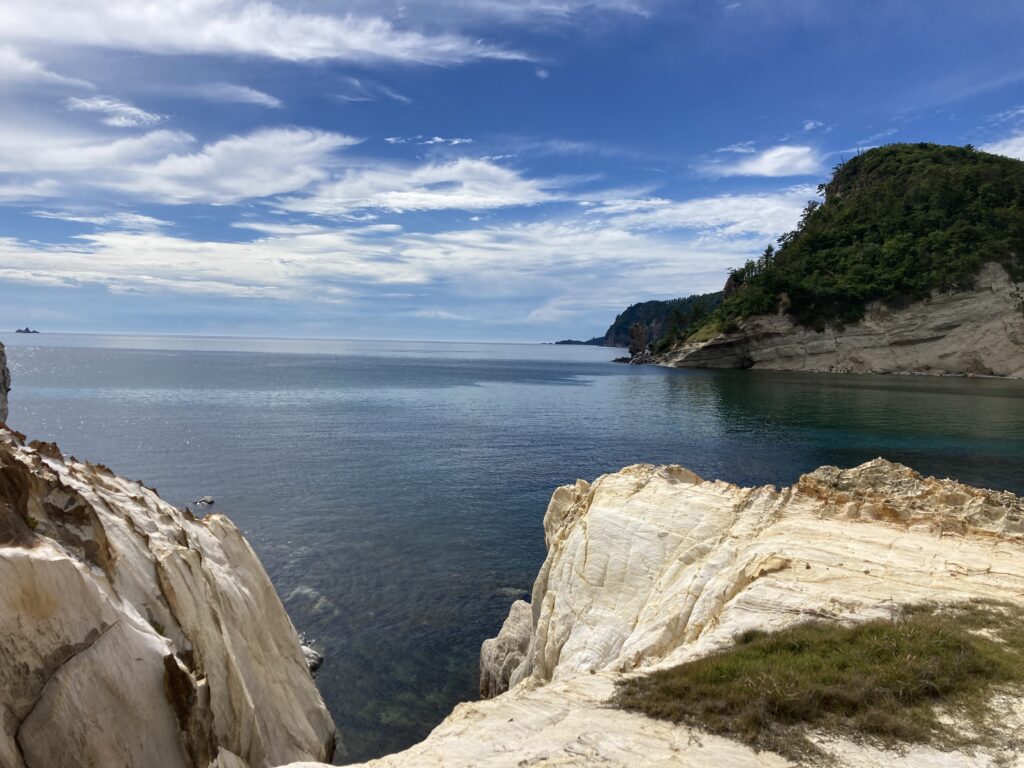

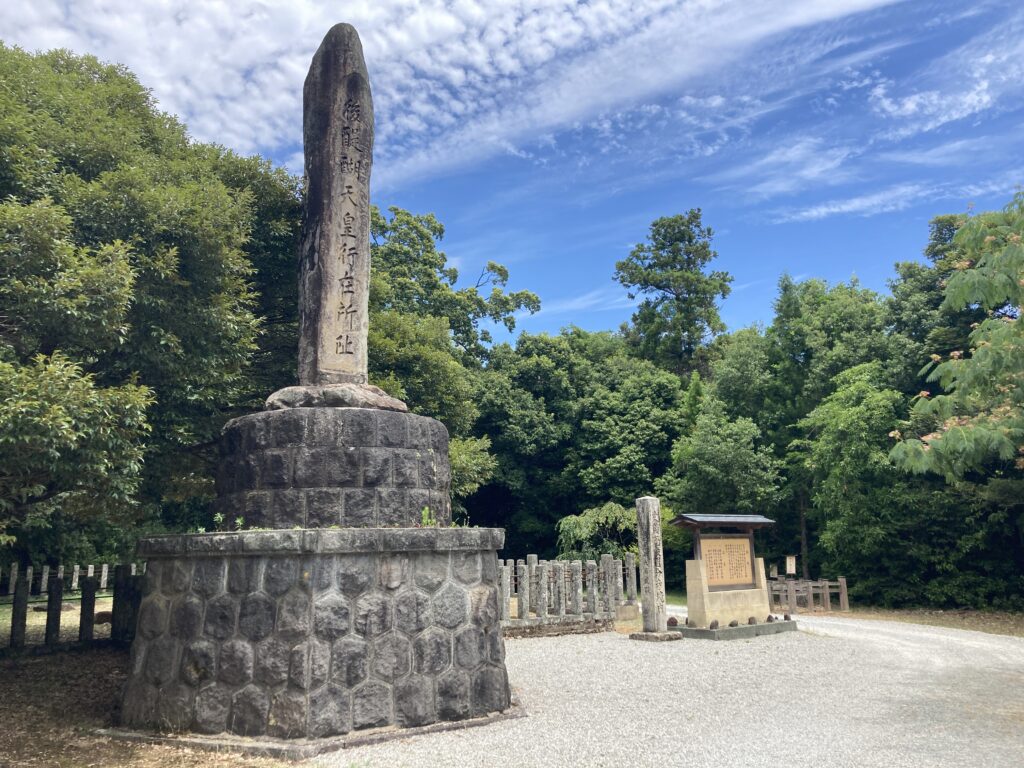
Now, I have introduced the Oki Islands, divided into Dozen and Dogo. How did you like them?There are countless islands in Japan, both inhabited and uninhabited. Each of these islands has its own unique history and culture. If you have come all the way to Japan, why not visit these islands?Ah, it was a good time.
Oki Islands. Personally, I highly recommend it. Definitely.
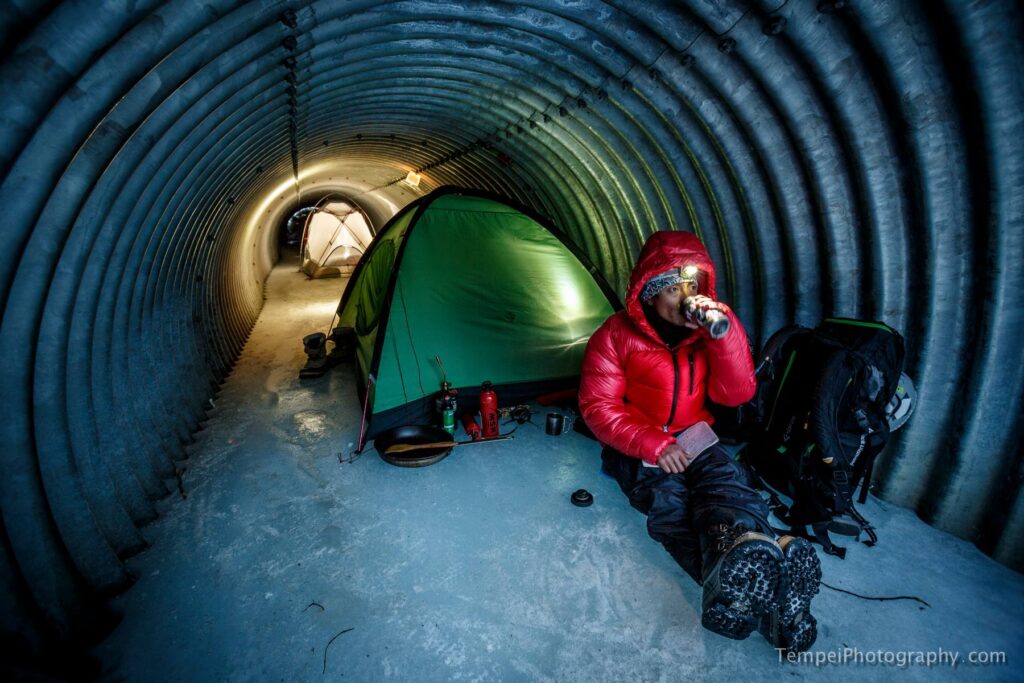
Riki Nakajima
Blog:https://ameblo.jp/rikistyle/
Instagram:https://www.instagram.com/rikinakajima/
Guide Company HP for Winter :https://rikijg.com/jp/
Guide Company HP for Green Season :https://www.rikijapowguide.com
Born in Shiga Prefecture in 1981. While studying in Whistler, Canada, he became a certified CSIA instructor and the first Japanese freeski instructor to receive the CFSA freeski instructor certification. After returning to Japan, he expanded his activities to include backcountry skiing in addition to participating in numerous freeskiing competitions. For the past few years, he has been working at Tomamu Ski Resort in Hokkaido, giving ski lessons, guiding, managing events, and acting as an MC. He also travels abroad every spring to try his hand at high adventure mountain climbing, and expresses his experiences through videos, photos, and events. He is the representative of the guide company “RIKI JAPOW GUIDE”.